Hösten 2018 lanserade Fibul magasinet MERA. MERA riktar sig till läsare i alla åldrar som intresserar sig för barn- och ungdomslitteratur och innehåller allt från intervjuer och boktips till kolumner och kreativa uppgifter.
Längst ner på sidan publicerar vi kompletterande material till magasinet.
Här kan du ladda ner MERA 2024: MERA2024
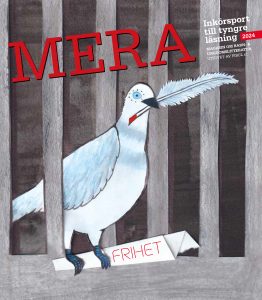
Här kan du ladda ner MERA 2023: MERA2023_webb
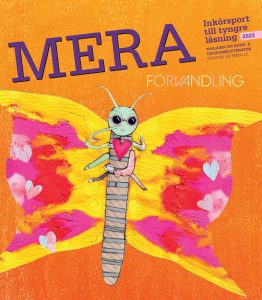
Här kan du ladda ner MERA 2022: MERA 2022_lowres
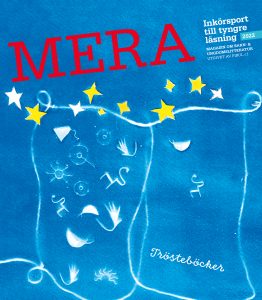
Här kan du ladda ner MERA 2021: MERA 2021 44s
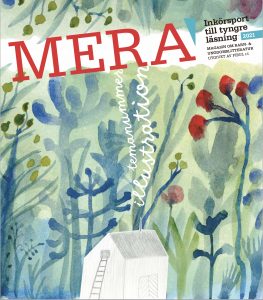
Här kan du ladda ner MERA 2020: MERA 2020 44s_lowres
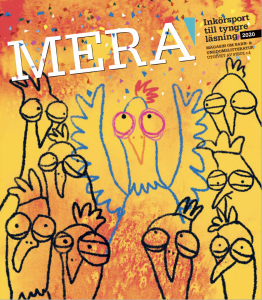
Här kan du ladda ner MERA 2019: MERA 2019 lowres
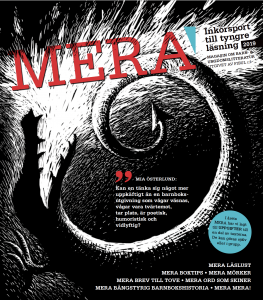
Här kan du ladda ner MERA 2018: MERA_lowres.
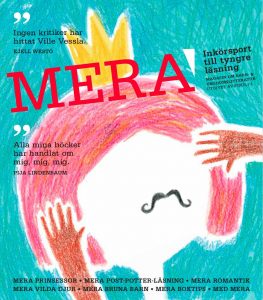
***
Texter på originalspråk:
Maija Hurme, teksti
Warda Ahmed, luonnos ja selfie
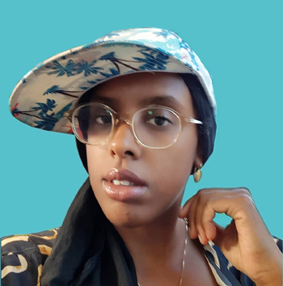
Tarvitaan: kirjoja meiltä meille
Kuka näkyy ja missä roolissa suomalaisessa lastenkirjallisuudessa? Tähän asti päähenkilöt ovat lähes poikkeuksetta olleet valkoisia ja kokemuksiltaan enemmistön. Siihen on pikkuhiljaa tulossa muutos. Warda Ahmed Haiji Omar työstää parhaillaan ensimmäistä lastenkirjaansa.
– Kyse ei ole vaan ihon väristä, vaan kokemuksesta, hän sanoo.
Kun Warda Ahmed oli lapsi, Järvenpään kirjasto oli tärkeä paikka. Sinne mentiin sisarusten kanssa lukemaan ja kirjoja kannettiin kotiin. Kirjastossa ei ollut somalinkielisiä kirjoja, mutta vanhemmat, joille myös kirjallisuus on tärkeää, kertoivat tarinoita lapsille. Tietoisuus siitä että lasten- ja nuortenkirjojen päähenkilöt eivät muistuttaneet häntä eivätkä kertoneet hänen kokemuksistaan, tuli pikkuhiljaa.
– Luin kritiikittömästi kaiken, elämäkertoja, Waltaria, kaikki Neiti etsivät, Sweet Valley High-kirjat, Warda Ahmed luettelee. Pikkuhiljaa aloin huomata että olen lukenut tämän saman stoorin monta kertaa. Vasta kun luin jostain kirjasta tarinan palestiinalaisesta nuoresta, ymmärsin että tällaisiakin kirjoja voi olla.
Sarjakuvasta Warda Ahmed löysi enemmän moninaisuutta: amerikkalaisissa supersankaris
– Etsimällä löytää, mutta ei välttämättä lähi- tai koulukirjastosta. Olen käynty sarjakuvafestareilla Ranskassa, Englannissa ja Ruotsissa, Sveitsissä ja sen kautta löytänyt kiinnostavia teoksia.
Tintin maailman kuvaus tummaihoisista on Warda Ahmedin mielestä vastenmielinen.
– Mutta löysin lukioikäisenä Hugo Prattin (mm Corto Maltese) sarjakuvat, ja ihailen sitä miten tasavertaisesti ja kauniisti hän kuvaa erilaisia ihmisiä.
Nykyään Warda Ahmed on kasvatustieteen opiskelija joka myös tekee ja opettaa sarjakuvataidetta.
– Suomen sarjakuvakenttä on hirveän valkoinen, ja mun hahmot ovat olleet aina erilaisia.
Ihmiset lukevat joskus Warda Ahmedin sarjakuviin merkityksiä joita niissä ei ole, luulevat että ne kertovat kulttuurista vaikka kyseessä olisi vaikka ihmissuhdetarina.
Ajatus lastenkirjasta tuli jo ennen omia lapsia. Warda Ahmed työskenteli Oma kieli oma mieli-projektissa. Hän tuotti opetusmateriaalia joa koulutti ohjaajia jotka työskentelivät somalin- ja kurdinkielisten lasten kanssa.
– Ymmärsin että halusin tehdä lastenkirjallisuutta niille lapsille joille sitä ei ole tehty.
Kyse on hahmojen ulkoisen olemuksen lisäksi kielestä. Oman kielen säilyttäminen on vähemmistölle tärkeää ja vaatii vanhemmilta paljon työtä, ja lastenkulttuuria omalla kielellä.
Kirja jota Warda Ahmed nyt työstää Koneen säätiön apurahan turvin yhdessä Mona Eidin kanssa, tulisi toivottavasti suomeksi ja somaliksi, kahtena erillisenä kirjana. Hän on kiinnostunut kuvakirjakerronnasta eikä usko että kahden kielen upottaminen samaan kuvakirjaan olisi paras mahdollinen ratkaisu. Kustantajaa kirjalla ei vielä ole.
Maailmalla on paljon lastenkirjoja jossa päähenkilöt ovat tummaihoisia, yhtenä ihanana esimerkkinä Warda Ahmed mainitsee bell hooksin Happy To Be Nappy-kirjan. Mutta:
– Ei riitä että niitä käännetään, vaan pitää olla omia kirjoja. Suomi-konteksti on tärkeä mun ajattelussa. Se voi olla joku tietty paikka joka on tunnistettavissa kirjan kuvituksessa.
Warda Ahmed sanoo että pitää ajatella kenelle kirjoittaa.
– Kirjoitan ruskeille lapsille. Monet kirjat jossa on rodullistettuja lapsia ovat tavallaan “Opetustarinoita valtaväestölle”.
On Wardan mielestä hienoa että nykyiset lastenkirjantekijät ovat heränneet huomioimaan moninaisuutta kirjoissaan.
– Mutta minullakin pitää olla mahdollisuus sanoa etttä haluan tehdä lastenkirjan ja sitten tehdä se.
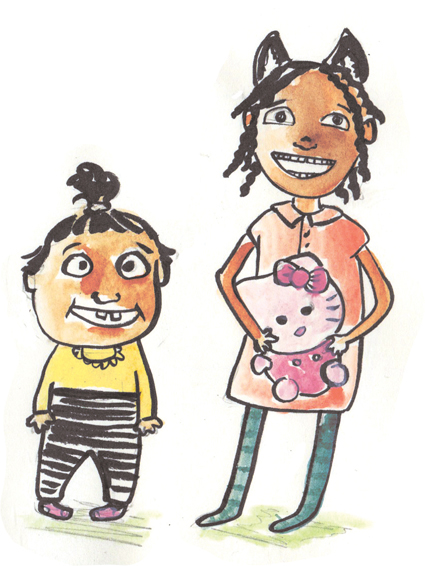
***
Maria Turtschaninoff, text
Jenny Lucander, illustration
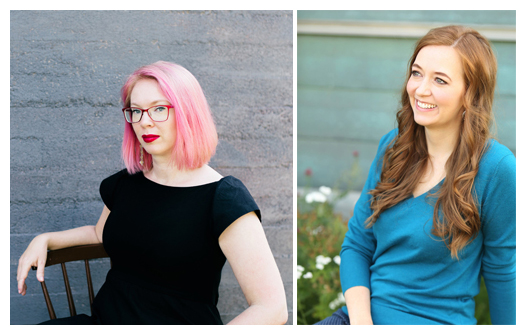
Can boys read about princesses?
Shannon Hale is the New York Times best-selling author of over twenty-five children’s and young adult novels, including a popular Ever After High series, graphic novel memoir Real Friends, and multiple award winners The Goose Girl, Book of a Thousand Days, and Newbery Honor recipient Princess Academy. She also written three books for adults, beginning with Austenland, which is a major motion picture starring Keri Russell.
I discovered Shannon Hale’s writing through the novel Book of a Thousand Days, a story based on a folk tale. I was delighted by the narrator’s voice, and quickly devoured other books by Hale, such as Austenland, The Goose Girl and Princess Academy. I have shared her picture book series Princess in Black with my son, who loves them, and I can’t wait to see what Hale will do with the Wonder Woman story, Diana, Princess of the Amazon, she and her husband Dean Hale are working on for DC Comics.
Hale is very active on twitter, and one of the things she has been vocal about for a long time is the fact that her books are assumed to be for girls, because she is a woman and her protagonists are female. When visiting schools the boys sometimes get to do something else, while the girls listen to her speak (the reverse is never the case if the visiting author is male), or then the teachers are apologetic and tell the boys they have to listen “even if this is for girls”. Shannon Hale describes this best herself, in this excerpt taken from her blog:
“I was presenting an assembly for kids grades 3-8 while on book tour for the third PRINCESS ACADEMY book.
Me: ”So many teachers have told me the same thing. They say, ’When I told my students we were reading a book called PRINCESS ACADEMY, the girls said—'”
I gesture to the kids and wait. They anticipate what I’m expecting, and in unison, the girls scream, ”YAY!”
Me: ”’And the boys said—”
I gesture and wait. The boys know just what to do. They always do, no matter their age or the state they live in.
In unison, the boys shout, ”BOOOOO!”
Me: ”And then the teachers tell me that after reading the book, the boys like it as much or sometimes even more than the girls do.”
Audible gasp. They weren’t expecting that.
Me: ”So it’s not the story itself boys don’t like, it’s what?”
The kids shout, ”The name! The title!”
Me: ”And why don’t they like the title?”
As usual, kids call out, ”Princess!”
But this time, a smallish 3rd grade boy on the first row, who I find out later is named Logan, shouts at me, ”Because it’s GIRLY!”
The way Logan said ”girly”…so much hatred from someone so small. So much distain. This is my 200-300th assembly, I’ve asked these same questions dozens of times with the same answers, but the way he says ”girly” literally makes me take a step back. I am briefly speechless, chilled by his hostility.”
My own novels mostly star girls and women, which has led me to get some surprising questions. Can boys read these? Why are all the villains men? Why do you write strong female characters? I was interested to discuss these topics with Shannon Hale, and reached out to her for a conversation about girls, boys and books.
Maria: Do you remember the first time you met with the assumption that your books are ”for girls”?
Shannon: My first book was published in 2003 and that assumption came at me immediately. I was surprised that publishers, publicists, booksellers, parents, etc., just assumed that no boy would be interested in my book because I was a woman and my main character was a girl. But I was new in the industry and doubted myself. It took me a few years to be able to examine this toxic ideology and start to speak back against it.
Maria: You have been very vocal about the issue of books not being either for boys or girls. What kind of experiences have you had meeting readers, adults or children, when it comes to this issue?
Shannon: A lot! I’ve done 1000+ events and it comes up just about every time. Parents, right in front of me, will tell their sons that they can’t read my books because “they’re for girls.” At speaking events, my introducers will say that I write “books for girls.” And then I always meet parents who confess to me that their son “actually likes your books!” Boys are perfectly capable of being interested in and having empathy for female protagonists if we stop shaming them for it.
Maria: This is what makes me both sad and angry. We teach boys that being female, and taking an interest in things that are coded female, is something to be ashamed of. I have, somewhat pointedly, said that I have found that men and boys seem to read and enjoy my books just like women and girls do: with their hearts and minds, not with their reproductive organs. Some schools in Finland still give out reading recommendation based on gender, for instance (and my novels are on the “for girls” side). One thing that has recently come up is the question of why the “bad guys” in my novels always are men. While, in fact, in my first two novels the main antagonists are women, several of them in fact, and in the third it’s mostly a non-gendered entity. It’s only in the following three that they are men, but somehow that is very shocking or provocative to some readers. Maybe it’s because the protagonists are female? I don’t think it would be an issue at all if the protagonists were male.
Shannon: That’s so bizarre! There’s a lot of weirdness. Readers bring their own experience and assumptions to books, so it’s natural that not everyone reads it the same way. But it’s very weird when what they get out of it is just not on the page at all. I remember one reviewer calling PRINCESS ACADEMY “soft-core porn” and I was like, “what book did you read???”
Maria: Princess Academy is a fantastic book and I do not remember any such theme! You have written quite a few books with the word ”girl” or ”princess” in the title. Has this been a conscious choice?
Shannon: It wasn’t initially a conscious choice. My first book was “The Goose Girl” because it’s based on a fairytale by that name. My third book was “Princess Academy” because the title just worked for the story. Those titles branded me, though, and the assumption that I’m a “writer for girls” has followed me for 30+ books. I embrace that. I’m proud to write about girls, lots of different kinds of girls. I’m happy to be an outspoken voice in support of stories about girls and the need for boys to also read widely.
Maria: Four of my novels feature the female protagonist’s name, and the latest ones have been branded “feminist fantasy”. I have at times worried that this will alienate certain (male) readers. On the other hand, I don’t think that we can bring about change by erasing girl’s stories. I feel that this contempt for ”books for girls” carries on through into adult literature. Do you agree?
Shannon: Definitely. Just looking at what we’re assigned to read in high school and college—the works deemed “important” by academia—and how it’s 90% works by men about men. Stories by women and about women have historically been deemed less significant. There’s plenty of evidence of this. I do think it’s changing slowly.
Maria: Yes! It is! I do feel like we can make a difference by addressing these issues. My books used to be sorted under the label ”strong girls” in the library system in Helsinki, while there of course was no ”strong boys” equivalent. I have brought this up in several speeches and interviews. But I recently noticed the label no longer exists at all! What kind of changes have you seen?
Shannon: Almost every time I speak to any group—whether elementary school or adults—I’ll broach the subject of gendered reading in some way. And 100x I’ve had people come up to me, sometimes years later, and say that they’d never thought about it till I spoke about it. I’m encouraged by that. Publishers are less and less identifying books as “for girls” or “for boys” which is wonderful. Literature can do its job best when we publish lots of different kinds of books and then let kids choose what they want to read without trying to tell them which stories are for them and which aren’t. That kind of behavior actually discourages lifelong readers.
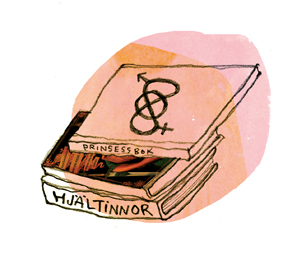
***
Päivi Heikkilä-Halttunen, teksti
Anna Härmälä, illustration
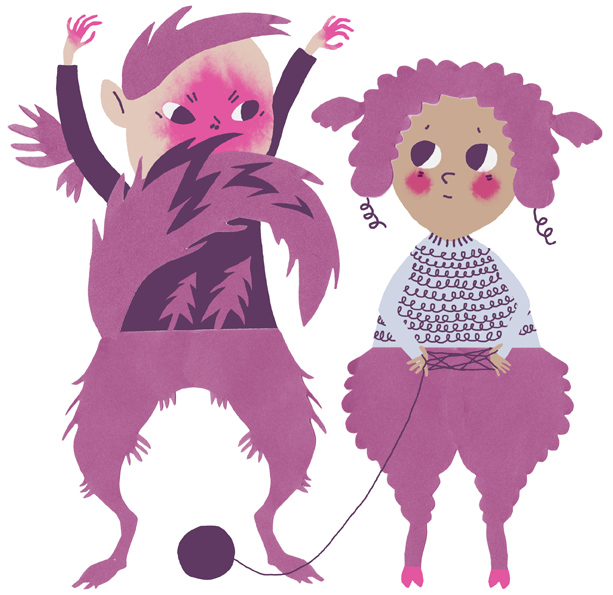
Lastenkirjan viimeiset villit – lapset vai eläimet?
Nykylapset eivät enää tunnistaa faunaa ja flooraa eivätkä uskalla leikkiä luonnon helmassa. Suomalaisten rakas sielunmaisema, metsä, on monelle lapsille vieras ja jopa pelottava vaarallinen miljöö.
Siitä huolimatta eläimet ovat yhä lastenkirjojen rakastetuimpia sankareita. Yhä siis ajatellaan, että lapsi on lähtökohtaisesti kiinnostunut eläimistä.
Lastenkirjoissa eläimet ovat yleensä joko lasten tasaveroisia kumppaneita tai ne seikkailevat itsenäisesti omassa satumaailmassaan. Eläimen pörröinen tai muutoin hellyttävä olemus vetoaa lapseen. Toisinaan eläinsankarin kautta työstetään myös lapsen arjen kipeitä tuntoja. Nadja Anderssonin Hönans kalas (2017), Anna Härmälän Burman (2016) ja Sanna Tahvanaisen & Lena Frölander-Ulfin (2017) Kurre Snobb och popcornen käsittelevät uupumista, isovanhemman kuolemaa ja riippuvuuksia.
Julkisessa keskustelussa on viime aikoina oltu huolestuneita siitä, että aikuiset inhimillistävät liikaa lemmikkieläimiään. Lastenkirjoissa tämä on ollut kautta aikain normaali tilanne: eläimet esitetään ihmisten lailla käyttäytyvinä, ajattelevina ja toisinaan myös vaatetettuina hahmoina.
Usein eläinsankarista kertova kuvakirja antaa sen vastaanottajalle enemmän liikkumavaraa aiheen työstämisessä. Malin Kivelän ja Linda Bondestamin Den ofantliga Rosabel (2017) kertoo pienestä pulskasta ponista, joka ei löydä paikkaansa trimmattujen ratsuhevosten joukosta. Johanna Hulkon & Marjo Nygårdin Ihana Maija -kuvakirjassa (2018) Maija-tyttöä haukutaan läskiksi. Kumpikin kirja viestii hieman eri vivahtein kehopositiivisuuden ja hyvän itsetunnon puolesta.
Suomalaisen kansansaduston eläimet ovat edelleen yllättävän hyvin edustettuna kuvakirjoissa. Kaisa Happosen & Anne Vaskon kuvakirjoissa Mur eli karhu (2016) ja Mur ja mustikka (2018) emo ja pentu ovat olemukseltaan dynaamisia metsän kuningaseläimiä, mutta niiden katseessa kajastelevat silti nykyihmisen elämän ydinkysymykset: karhunpennun identiteettikriisi ja erilaisuuden tunnot sekä emon uupuminen vanhemmuuteen tai alituiseen suorittamiseen.
Uusin lastenkirjallisuuden trendi on herätellä eläinhahmojen kautta miettimään ilmastonmuutosta, eläinten tehotuotantoa ja kannustaa lapsiakin kasvissyöntiin. Antti Nylénin & Ilja Karsikkaan lastenromaanissa Eino ja suuri possukysymys (2018) alakouluikäinen poika saa lelupossun, joka havahduttaa hänet näkemään lihansyönnin epäeettisyyden.
Lastenkirjojen tabuaiheet ovat hupenemassa.
Siksi on mielenkiintoista, että aggressio ja suoranainen raivo saavat tulkeikseen nimenomaan eläimet. Näin käy Hannamari Ruohosen Kadonnut äitini -kuvakirjassa, jossa lapsen vihan tunteet siirtyvät lelukoiran tai mielikuvitusystävän kannettaviksi. Tove Appelgrenin & Salla Savolaisen Vesta-Linnea -kirjoissa äiti muuttuu tunnekuohussaan jääkarhuksi, pandaksi ja villiminkiksi.
Inhimilliset tunteet projisoidaan siis eläimiin, joille villi ja alkukantainen käytös on yhä sallitumpaa kuin meille ihmisille.
Päivi Heikkilä-Halttunen on lastenkirjallisuuden tutkija, kriitikko ja Onnimanni-lehden päätoimittaja, lastenkirjahylly.blogspot.com